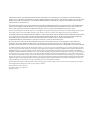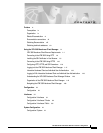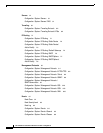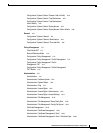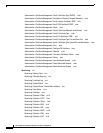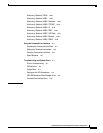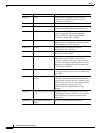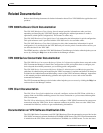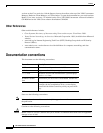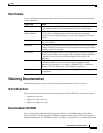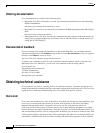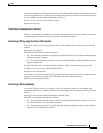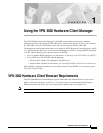
x
VPN 3002 Hardware Client Reference
OL-1893-01
Preface
Organization
Chapter 5 Servers Explains how to configure the VPN 3002 to
communicate with DNS servers to convert
hostnames to IP addresses.
Chapter 6 Tunneling Explains how to configure IPSec.
Chapter 7 IP Routing Explains how to configure static routes, default
gateways, and DHCP parameters and options.
Chapter 8 Management Protocols Explains how to configure built-in VPN 3002
servers that provide management functions:,
HTTP and HTTPS, Telnet, SNMP, SNMP
Community Strings, SSL and SSH.
Chapter 9 Events Explains how to configure system events such as
alarms, traps, error conditions, network problems,
task completion, or status changes.
Chapter 10 General Explains how to configure the system
identification, date, and time.
Chapter 11 Policy Management Explains how to configure and use PAT and
Network Extension modes.
Chapter 12 Administration Explains how to configure and use high-level VPN
3002 administrator activities such as who is
allowed to configure the system, what software
runs on it, rebooting and shutting down the system,
managing its configuration files, and managing
X.509 digital certificates.
Chapter 13 Monitoring Explains the many status, statistics, sessions, and
event log screens that you can use to monitor the
VPN 3002.
Chapter 14 Using the Command-Line
Interface
Explains how to use the built-in menu- and
command-line-based administrative management
system via the system console or a Telnet session.
With the CLI, you can access and configure all the
same parameters as you can using the
HTML-based VPN 3002 Hardware Client
Manager.
Appendix A Troubleshooting and System
Errors
Describes common errors that may occur while
configuring the system, and how to correct them.
It also describes all system and module LED
indicators.
Appendix B Copyrights, Licenses and
Notices
Provides copyright licenses and notices.
Chapter Title Description



